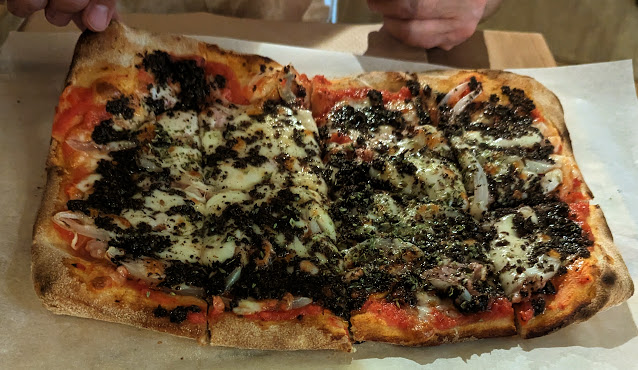So the class I am taking that started today is from one of my favorite professors Jake Smith, a cultural historian with a special emphasis in media. We last took his class on the History of the Recording Industry. It was excellent in an unexpected way. Much more depth than I expected and very very interesting so I figured this one had a good chance to being the same.
Having just finished a class by Nick Davis on Classics of Contemporary Cinema, this seemed like a fine segue into another area of media.
Here is the syllabus:
Pinocchio to Pokémon: The History of Children’s Media
Jacob Smith, Professor, Radio-Television-Film Director, MA in Sound Arts and Industries
When we consider the subject of children’s media culture, we quickly discern a host of contradictory behaviors and attitudes: childhood is seen as a period of timeless wonder, but children are bombarded with all the latest fads and gadgets; we try to insulate children from the adult world, but provide them with media technologies that allow them easy access to it. This class will explore contradictions such as these by exploring the history of children’s media. We will discuss film adaptations of fairy tales and classic children’s literature; children’s television; digital games; children’s music; and online video. Our case studies will allow us to engage with debates about contemporary media culture and the nature of childhood. Children are often understood to be a particularly vulnerable segment of the media audience, and children’s media has much to tell us about media regulation and censorship, theories about media influence, and the media’s role in education and marketing.
March 28 Media and the Construction of Childhood
We begin by thinking about the intersection of popular media and childhood: a crossroads that has long inspired both beloved content and adult concern. Next, we encounter an argument about the “social construction of childhood,” a conceptual framework that will structure our consideration of a “modern” notion of childhood. Our case study this week is the film, Big (1988), which shows how popular narratives might shed light on the history of childhood.
April 4 The Birth of the Children’s Audience: Fairy Tales and Classic Kid’s Lit
We begin our historical survey of children’s media by outlining some of the factors that contributed to a “modern” notion of childhood. Our primary case studies are fairy tales and books from the “golden age” of British children’s literature. Media adaptation provides a method for gauging how notions of childhood change over time, and we examine several versions of Lewis Carroll’s “Alice in Wonderland,” from the surreal to the spectacular.
April 11 The Child Movie Audience, Censorship, and the Rise of Disney
This week we encounter the concept of the “moral panic”: a recurring social dynamic in the history of children’s media. Continuing our historical survey, we move to the 1910s and 1920s, when the rise of a child audience for motion pictures spurred a moral panic that movies were corrupting the nation’s youth. We’ll see how that panic helped to pave the way for Walt Disney, and we’ll take Disney’s Pinocchio (1940) as our case study.
April 18 Postwar Kids Culture
The postwar era was marked by the Baby Boom and a dramatic shift in childrearing advice. This provides us with an opportunity to consider how trends in childrearing literature shape media practices in the home, a dynamic we can apply to more recent examples. With regards to the postwar era, we examine the “Poet Laureate of Permissive Childrearing”: Dr. Seuss. We’ll talk about Seuss’s little-known but fascinating The 5000 Fingers of Dr. T (1953). The postwar era was also marked by a new medium – television – and a new moral panic about its relationship to children.
May 2 Marketing to Children and “Home Alone” Kids
Television ushered in a new era of advertising directly to children. We examine concerns about advertising to kids, the intersection of the toy industry and TV, and influential brands like Barbie and GI Joe. We update this debate with a consideration of online “unboxing” videos. Our historical survey moves to the 1980s and 1990s and the blockbuster Home Alone (1990) has much to tell us about marketing to kids and a new kind of worldly-wise “latchkey kid.”
May 9 Media as Children’s Education
Television caused concern as a vehicle for advertising to kids, but it also held out the promise of a new kind of media education. This week we investigate educational and prosocial media for kids, with a focus on the history of PBS, the Children’s Television Workshop, and shows like “Sesame Street,” “Mr. Roger’s Neighborhood,” and “Blues Clues.” We consider some of the research on child development that shaped the style of these programs and compare a US and UK model of children’s television.
May 16 Children’s Play and Videogames
We shift our focus from film and television to videogames, tracking the rise of videogames as a form of popular entertainment and considering them in relation to theories of play. The history of play spaces provides a new perspective on games like Pokemon and Minecraft, as well as the multi-media LEGO franchise. The topics of children’s play and play space also bring up a host of other related issues, including playground design, the “free range kids” parenting movement, and concerns about “nature deficiency disorder” for media-saturated kids.
May 23 Meanings and Effects in Children’s Media; Revolutionary Childhood
This week we engage with one of the central debates about children and media: media violence and its effects on children’s behaviour. We outline some of the main arguments and research regarding media effects, as well as criticisms of that approach. We also examine an ideology of “revolutionary childhood” in Soviet Russia and Communist China, and look at several media depictions of child soldiers.
May 30 Kids Make Media
In our final session, we think about several ways in which children can be active participants in their media culture. First, we examine the history of child actors, who present a fascinating contradiction since they both embody the modern ideology of innocent childhood and go against that same ideology by being professional child laborers. We’ll watch some examples of famous child actors in action and discuss the particular characteristics of children as screen performers. The documentary My Kid Could Paint That (2007) provides a fascinating case study. We also think about kids as filmmakers – something that has become much more prevalent in the digital era. Finally, we consider children’s rights legislation and how it might translate into the active participation of children in media production.
So it promises to be an interesting 9 weeks of classes.








.svg.png)





























































